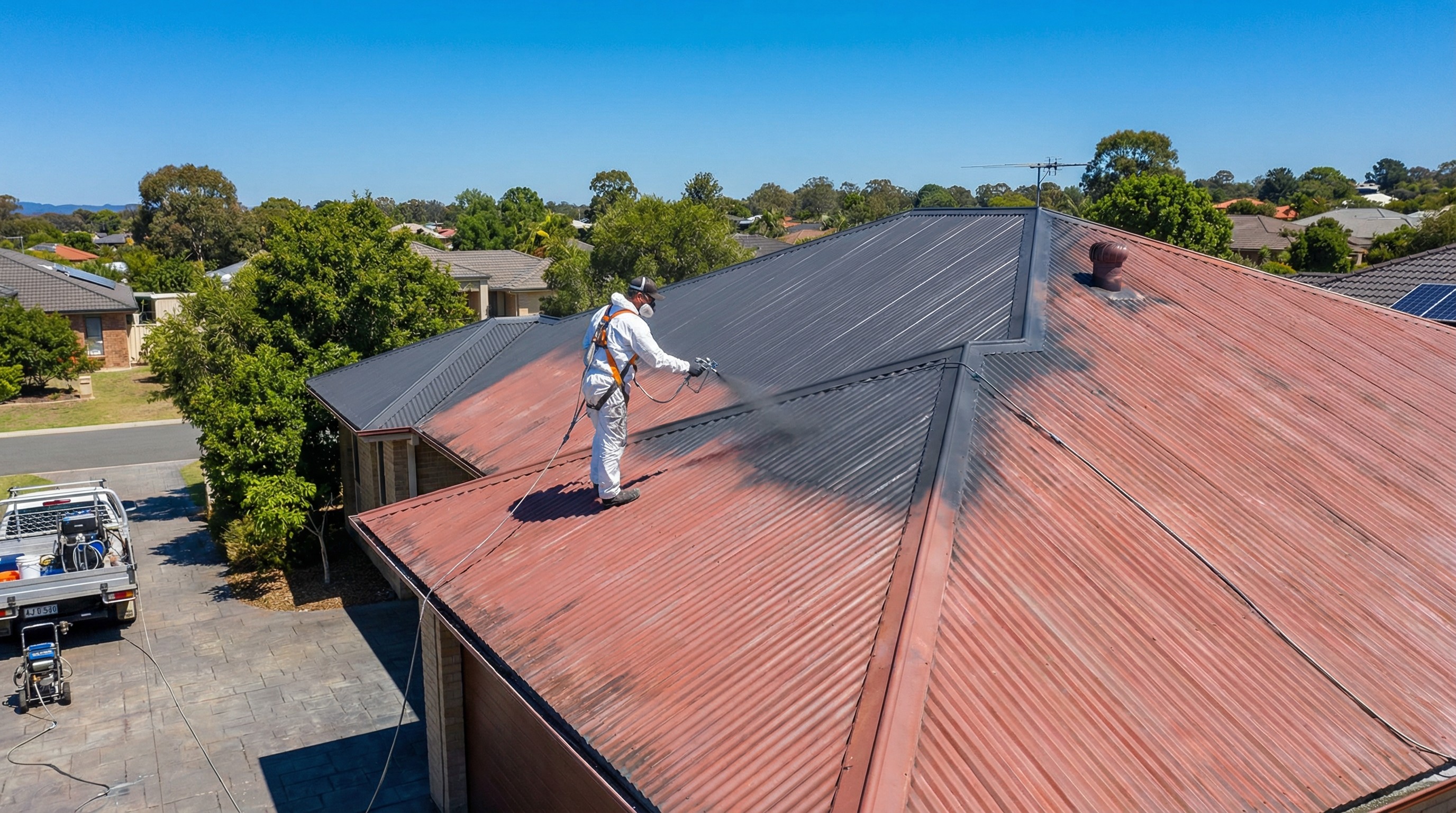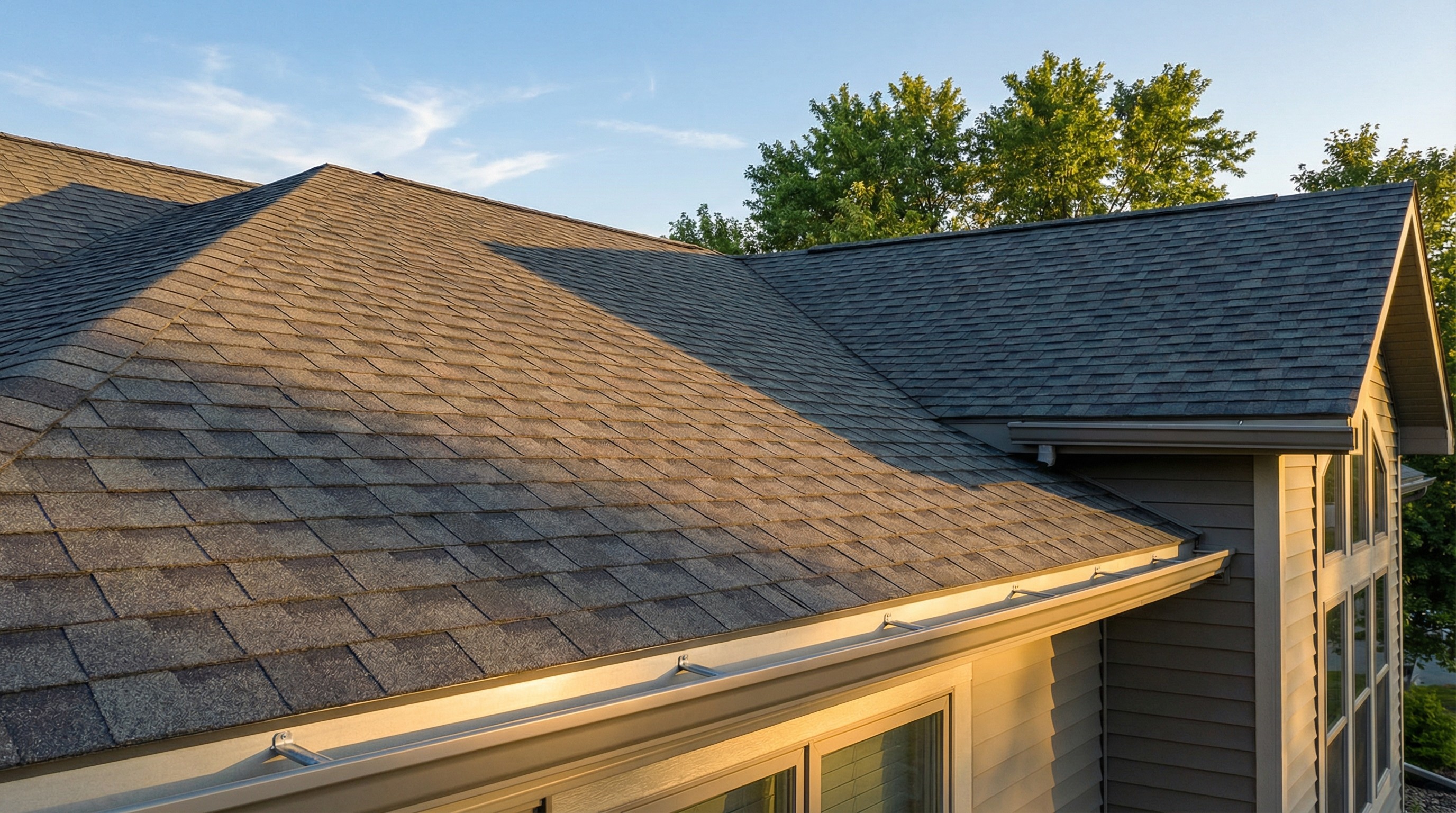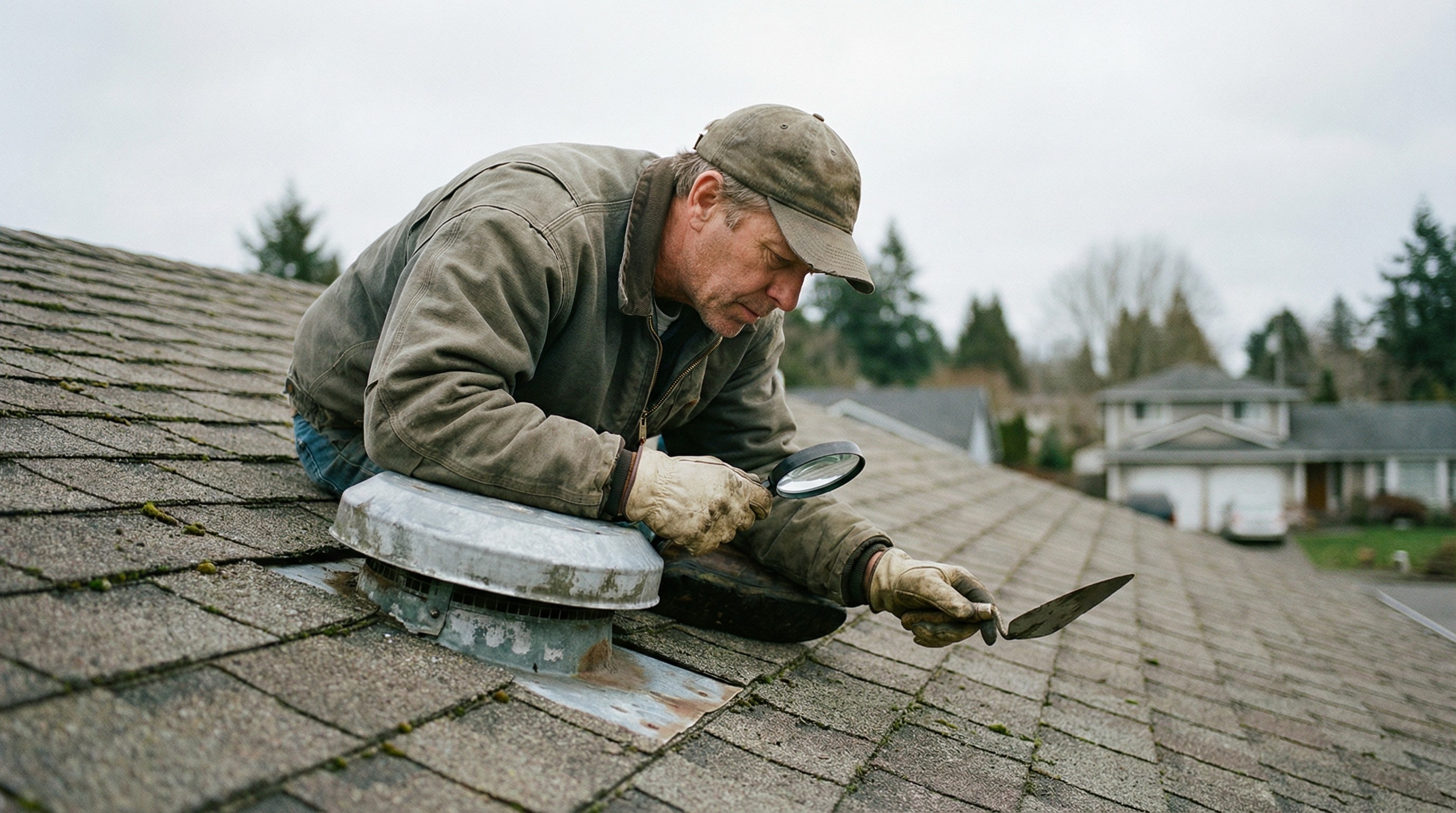If you're looking at a faded, rusty metal roof and wondering if it's time for a complete replacement, here's some good news: in most cases, you can restore both protection and curb appeal with a fresh coat of paint for a fraction of replacement costs.
The key to success is understanding that metal roofs require specific prep work and the right type of paint-skip these steps, and your new finish could peel within a year. This guide covers which paints work best for different metal types, how to prepare the surface properly, and seven tips that help the job last.
Can You Paint a Metal Roof
Yes, you can paint a metal roof. Steel, aluminum, galvanized metal, and tin roofs all accept paint when the surface is properly cleaned, primed, and prepped. Painting a metal roof extends its life, stops rust from spreading, and refreshes your home's appearance for a fraction of what replacement costs.
Most metal roofs benefit from a fresh coat every 10 to 15 years. If you're noticing fading, chalking (that powdery white residue that rubs off when you touch it), or small rust spots forming, painting is usually the smart move to protect your investment.
Best Paint for Metal Roofs
If you're wondering where to start, acrylic latex paint designed for metal roofs is your best bet for most situations-it's formulated to stretch and contract as temperatures change throughout the day, which is exactly what you need for long-lasting results. Steel roofs with existing rust often do better with oil-based alkyd paint, which grips the surface more aggressively.
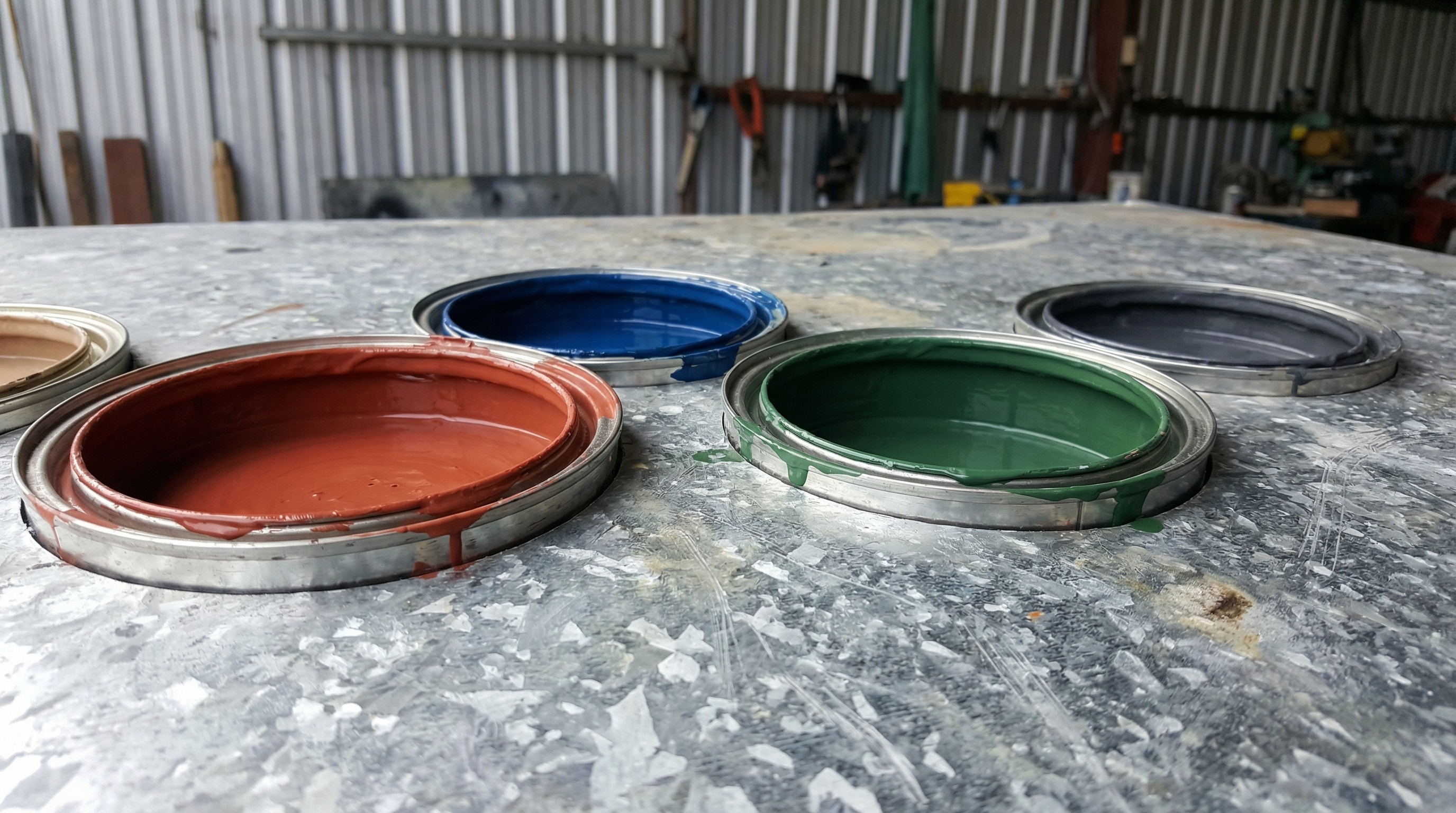
Here is a quick breakdown:
Paint Type | Best For | Why It Works |
|---|---|---|
Acrylic latex | Most metal roofs | Flexes with temperature swings |
Oil-based alkyd | Steel roofs, rusty surfaces | Bonds tightly to metal |
Elastomeric coating | Flat or low-slope metal | Seals and waterproofs |
Galvanized primer + paint | Galvanized roofs | Sticks to zinc coating |
Aluminum/silver coating | Tin roofs, barns, sheds | Reflects heat |
Acrylic latex paint for metal roofing
Acrylic latex is what most DIYers reach for, and for good reason. It goes on easily, cleans up with water, and moves with the metal as it heats and cools. When you're shopping, look for cans specifically labeled for exterior metal use at your local home improvement store-this designation ensures the paint is formulated to handle the unique challenges metal roofs face.
Oil-based alkyd paint for steel roofs
Oil-based alkyd paint creates a harder, more durable bond than latex. It works especially well on older steel roofs or surfaces with light rust that has been treated. The trade-off is stronger fumes and longer drying time, so you'll want to plan for proper ventilation and allow extra time between coats-typically 24 hours instead of the 4-6 hours you might expect with latex.
Elastomeric and silicone roof coatings
Elastomeric coatings are thick, rubberized paints that stretch over the surface and seal out water. Think of them as a flexible skin for your roof. Silicone coatings work similarly. Both are popular with professionals for flat or low-slope metal roofs where water pooling is a concern.
Paint for galvanized metal roofs
Galvanized metal has a zinc coating that actually repels regular paint. If you skip the right primer, your new paint will bubble and peel within a few months. Use an etching primer or one labeled specifically for galvanized surfaces. This extra step makes all the difference.
Aluminum paint and silver roof coatings
Silver or aluminum paint reflects sunlight and keeps buildings cooler. You will see it on barns, sheds, and older tin roofs throughout the South. Some people call it iron roof paint. It is affordable and provides decent protection, though it typically does not last as long as premium acrylic options.
How to Prepare a Metal Roof for Painting
Prep work matters more than the paint you choose. Here's what I've learned from years in the roofing industry: even the most expensive paint will fail within a year if you don't properly prepare the surface first. The process breaks down into four steps: inspect, clean, remove rust, and prime.
1. Inspect for damage and rust spots
Walk the roof carefully or view it from a ladder if the pitch is steep. Look for holes, loose panels, and areas where rust has eaten through the metal. Remember, paint is a protective coating, not a structural repair-if you find holes or serious damage, you'll need to address those issues first before painting will be effective.
2. Power wash and clean the surface
Use a pressure washer to blast away dirt, mildew, and that chalky residue from old paint. Let the roof dry completely before moving on. Wet metal is dangerously slippery, so give it at least a full day in dry weather.
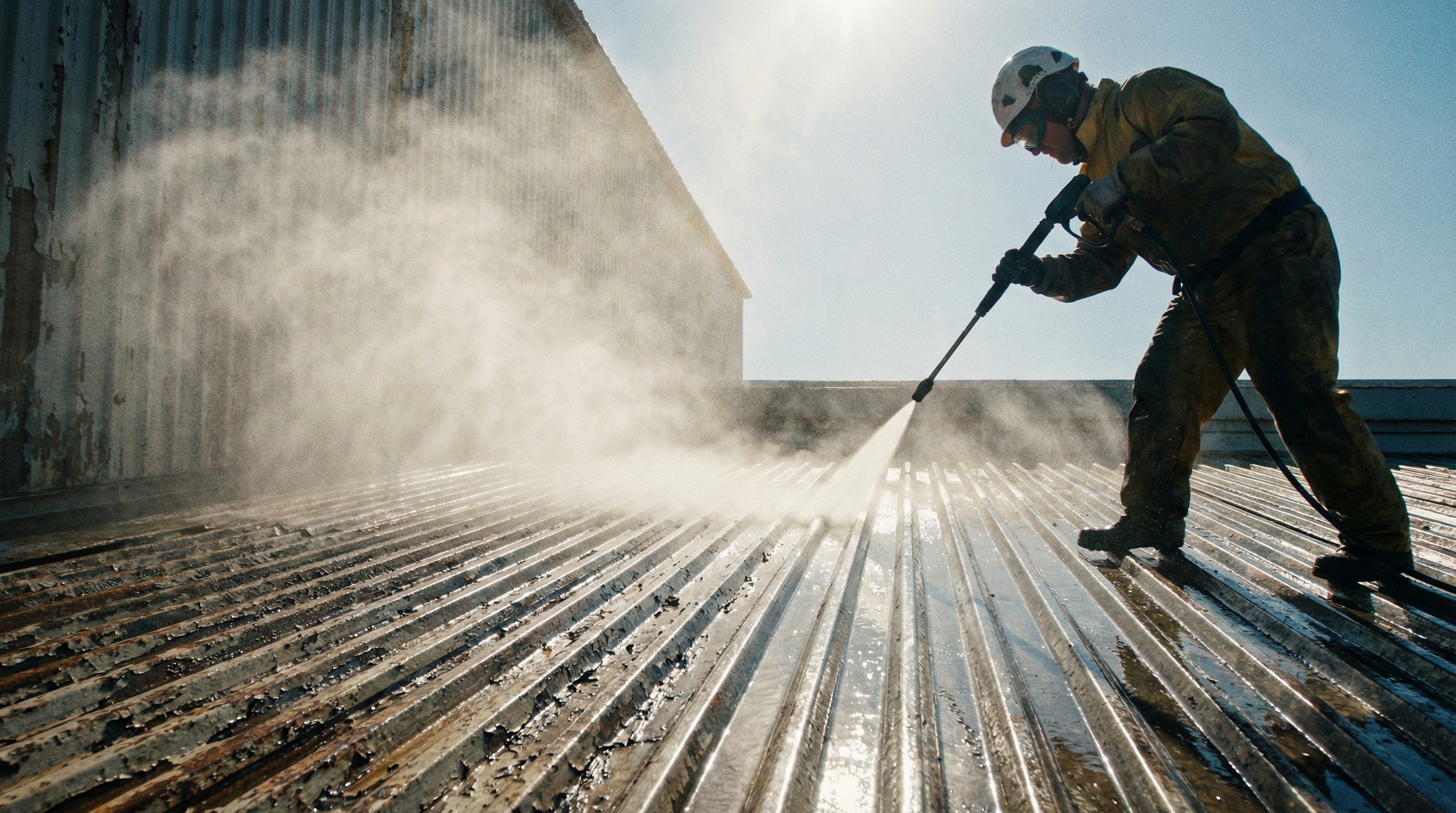
3. Remove rust and sand loose paint
Scrub rust spots with a wire brush or apply a rust eliminator product according to the label directions. Sand any areas where old paint is flaking or peeling. New paint will not stick to loose material, so take your time here.
4. Apply a metal roof primer
Primer blocks rust and helps paint bond to the metal. DTM primer (which stands for Direct-to-Metal) works for most roofs. Galvanized surfaces require a primer made specifically for zinc-coated metal. Let the primer dry fully, usually overnight, before applying paint.
Seven Tips for Painting a Metal Roof
These seven tips come from real-world experience with metal roof painting projects-the kind of practical insights that go beyond what you'll find on paint can labels.
1. Wait for dry weather between 50 and 85 degrees
Paint does not cure properly when it is too hot, too cold, or too humid. Check the forecast and avoid painting if rain is expected within 24 hours. Early morning often offers the best window before the roof surface heats up in direct sun.
2. Use a primer made for metal roofing
Skipping primer is the number one reason metal roof paint jobs fail. Match your primer to your metal type:
Steel: Standard DTM primer works well
Galvanized: Requires etching primer or galvanized-specific primer
Aluminum: Use a primer rated for non-ferrous metals
3. Choose a sprayer for even coverage
An airless sprayer delivers the fastest, smoothest results on a metal roof. Rollers work but take longer and can leave texture marks. Save brushes for edges, seams, and small touch-ups.
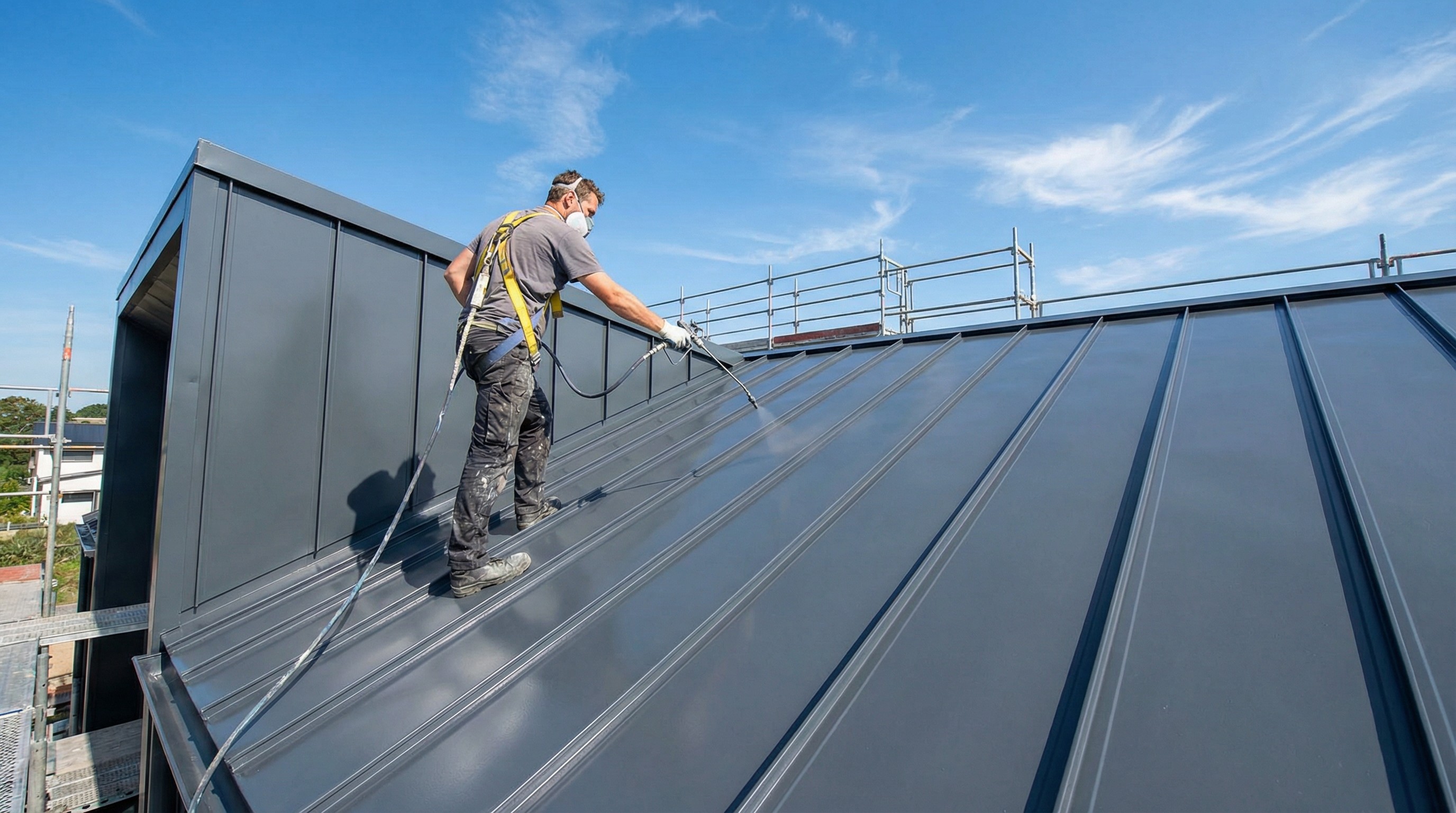
4. Pay extra attention to seams and fasteners
Seams, screws, and edges are where rust starts and paint fails first. Apply extra primer and paint to every fastener head and overlap. A little extra time on details prevents bigger problems two or three years down the road.
5. Apply two or three thin coats
Thin coats dry faster and bond better than one thick coat. Two coats is the minimum for decent protection. Three coats give you richer color and longer life, especially in harsh climates.
6. Allow full dry time between coats
Wait at least overnight between coats, or follow the specific instructions on your paint can. Rushing this step causes adhesion problems and peeling later. Patience here pays off.
7. Seal all edges and roof penetrations
After painting, apply sealant around vents, chimneys, and roof edges where water tends to find its way in. This step is optional but adds extra protection. Use a thin bead and avoid over-applying, which creates a mess and can trap moisture.
Should You DIY or Hire a Professional
Painting a metal roof is a manageable weekend project for some homeowners, but not everyone. Your comfort on ladders, your roof's pitch, and your home's height all factor into the decision.
DIY makes sense if: You have a single-story home, a low-slope roof, you are comfortable working at height, and the roof area is relatively small.
Hiring a pro makes sense if: Your roof is steep, your home is two stories or taller, you have significant rust damage, or you want a warranty on the work.
Professional painters bring experience, proper spray equipment, and insurance coverage that protects you. For large or complex roofs, the extra cost often pays off in quality and safety-just make sure you get detailed quotes that break down labor, materials, and any additional services so you can compare fairly.
How Much Does It Cost to Paint a Metal Roof
Cost varies quite a bit depending on your specific situation. However, repainting is almost always cheaper than replacing the entire roof.
The main factors that affect price:
Roof size: More square footage means more paint and more labor hours
Roof condition: Heavy rust or peeling paint adds prep time
Paint quality: Premium metal roof paint costs more upfront but lasts longer
DIY vs professional: Hiring a painter adds labor cost but saves you time and physical risk
For a rough sense, DIY materials for a small roof might run a few hundred dollars. Professional painting on a larger home could reach several thousand. Getting quotes from multiple painters gives you a realistic range for your area and helps ensure you're getting fair pricing-something we see homeowners struggle with regularly in the Chattanooga market.
How to Maintain a Painted Metal Roof
A little maintenance extends the life of your paint job significantly.
Clean the Roof Once a Year
Rinse the roof with a garden hose or light pressure wash to remove leaves, pollen, and mildew. Buildup traps moisture against the paint and breaks it down faster.
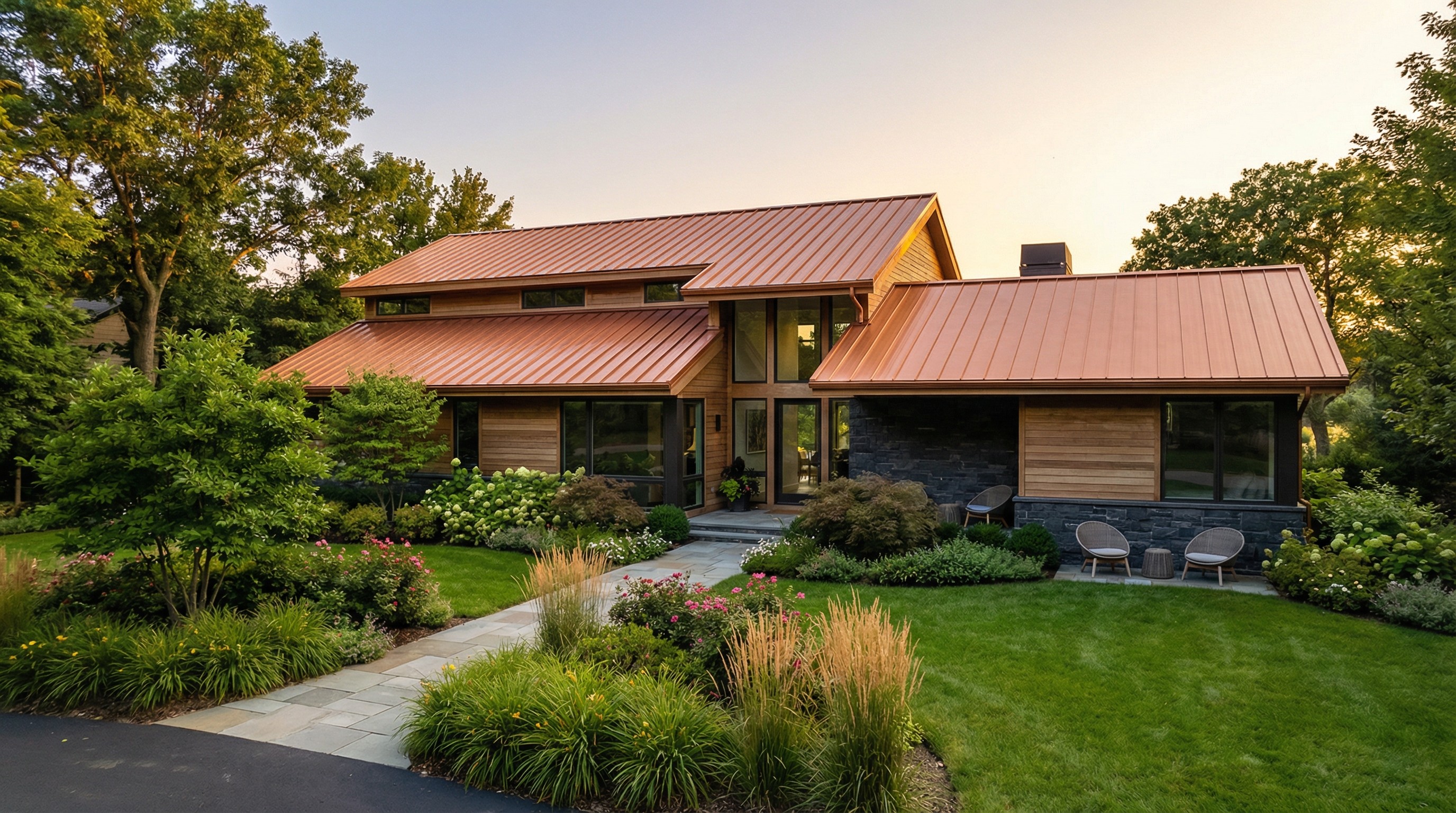
Inspect for Rust and Peeling Paint
Check your roof once a year, especially after storms or heavy weather. Walk the perimeter and look for any spots where paint is lifting or rust is forming. Catching problems early keeps repairs small.
Touch Up Problem Areas Promptly
When you spot a rust spot or paint chip, sand it lightly, apply primer, and repaint. Waiting allows rust to spread underneath the surrounding paint, turning a small fix into a much larger project.
When Repainting a Metal Roof Is Not Worth It
Painting is not always the right answer. Sometimes the honest advice is to replace rather than repaint.
Rust has eaten through the metal: Paint cannot fix holes or structural damage
Panels are warped or lifting: This indicates a structural problem that requires replacement
The roof is past its expected lifespan: A new roof is a better long-term investment
Multiple previous repaints have failed: There is likely an underlying issue that paint will not solve
If your roof falls into one of these categories, painting just delays the inevitable and wastes money.

